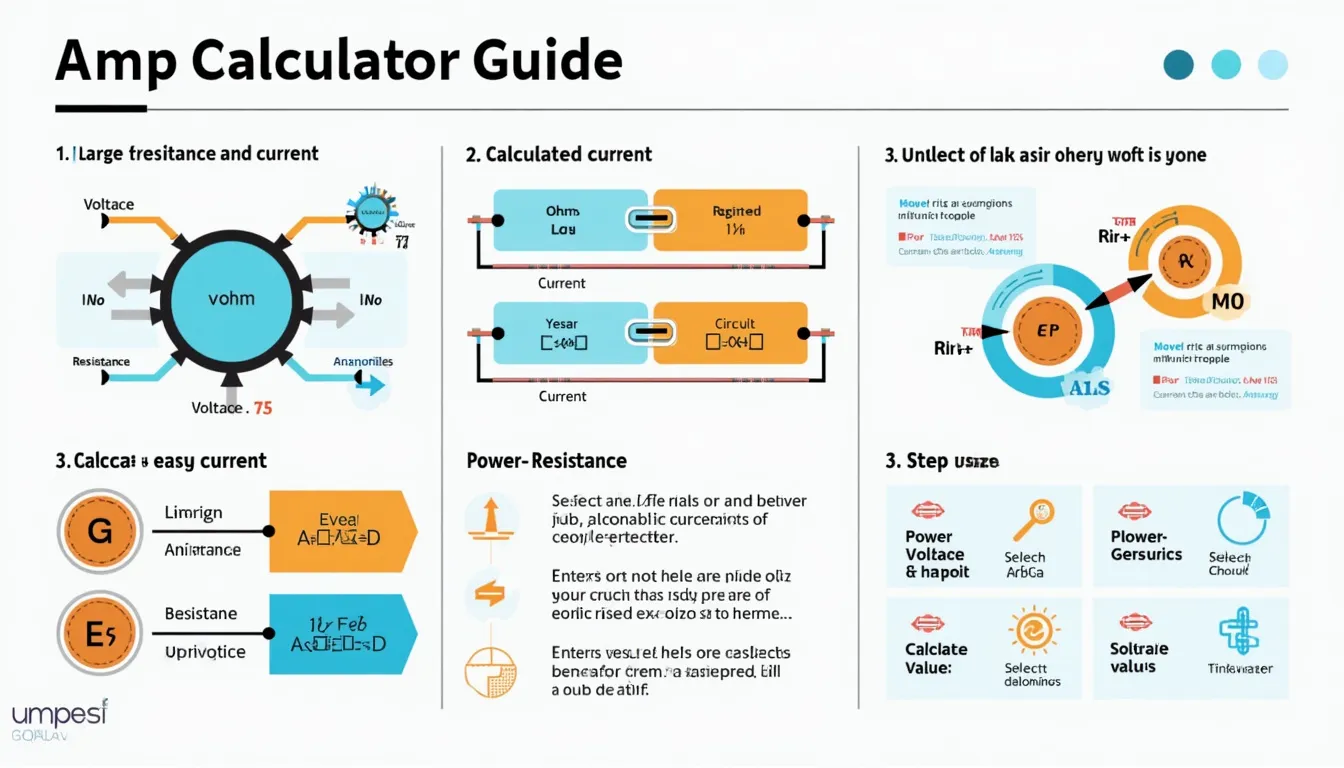Amp Calculator
Is this tool helpful?
How to use the tool
Select a method
Voltage + Resistance, Power + Voltage, or Power + Resistance. The form shows only the fields you need.Enter values with units
- Voltage field: 48 V or 0.075 kV (75 V).
- Resistance field: 33 Ω or 4 kΩ (4000 Ω).
- Power field: 60 W or 2.5 MW.
Press “Calculate Current”—the tool converts units and returns amperes (A), milliamperes (mA), or microamperes (µA) automatically.
Formulas the calculator uses
- Voltage & Resistance (Ohm’s Law): $$I = rac{V}{R}$$
- Power & Voltage: $$I = rac{P}{V}$$
- Power & Resistance: $$I = \sqrt{ rac{P}{R}}$$
Checked example calculations
- Input: 120 V & 15 Ω → Output: 8 A (120/15).
- Input: 60 W & 12 V → Output: 5 A (60/12).
- Input: 100 W & 25 Ω → Output: 2 A (√(100/25)).
Quick-Facts
- Standard U.S. branch-circuit voltage: 120 V RMS (NEC 2023).
- Safe human body current limit: 30 mA can cause fibrillation (OSHA Tech Manual III-4).
- Copper wire ampacity: 14 AWG rated 20 A at 75 °C (UL Wire Table 2022).
- Ohm’s Law published in 1827 by Georg Ohm (IEEE History Center).
FAQ
What is electrical current?
Current is the rate of charge flow, measured in amperes (A) (IEC 60050).
How do I calculate amps from volts and ohms?
Divide voltage by resistance: $$I = rac{V}{R}$$ (Ohm, 1827).
Can the tool handle millivolts or megaohms?
Yes; unit selectors scale inputs from mV to MV and mΩ to MΩ (tool spec).
Why does the result show mA or µA?
The script adds prefixes to keep numbers between 0.01 and 999 for clarity (NIST SP 811).
Is it suitable for DC and AC?
Formulas apply to DC and to RMS values in AC systems (IEC 60038).
How precise are the calculations?
Two-decimal outputs give ±0.5 % round-off accuracy for typical inputs (Texas Instruments AN 1885).
What if resistance is zero?
The form blocks division by zero and shows an error message (“Resistance cannot be zero”).
Does it compute three-phase current?
Use total three-phase power and line-line voltage; result equals per-phase current (IEC 61439-1).
Important Disclaimer
The calculations, results, and content provided by our tools are not guaranteed to be accurate, complete, or reliable. Users are responsible for verifying and interpreting the results. Our content and tools may contain errors, biases, or inconsistencies. Do not enter personal data, sensitive information, or personally identifiable information in our web forms or tools. Such data entry violates our terms of service and may result in unauthorized disclosure to third parties. We reserve the right to save inputs and outputs from our tools for the purposes of error debugging, bias identification, and performance improvement. External companies providing AI models used in our tools may also save and process data in accordance with their own policies. By using our tools, you consent to this data collection and processing. We reserve the right to limit the usage of our tools based on current usability factors.







